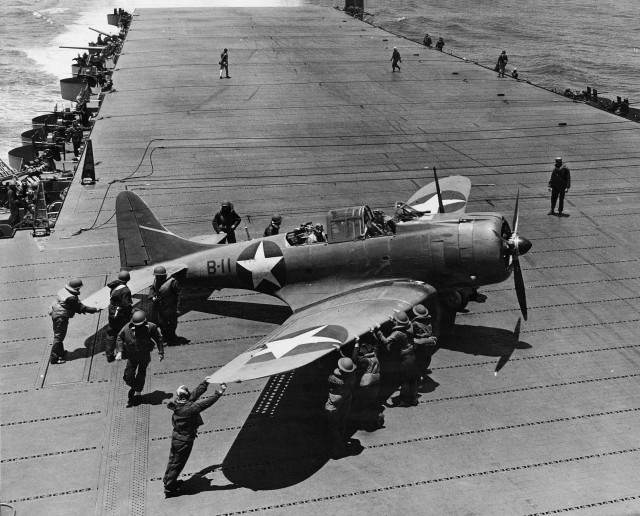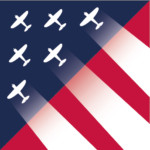History Presentation AIRCRAFT CARRIER OPERATIONS IN WORLD WAR II Saturday, March 16, 2024
AIRCRAFT CARRIER OPERATIONS IN WORLD WAR II
Saturday, March 16, 2024
Doors Open at 9:00 am Presentation Begins at 10:00 am

Photo: An SBD Dauntless on the U.S.S. Hornet during the Battle of Midway.
Photo source: The Battle of Midway: The Turning Point in the Pacific War (warhistoryonline.com)
Victory in WWII could not have been achieved without decisive victories at sea. As the war progressed, aircraft carriers played an ever-increasing role in keeping shipping lanes open, supporting amphibious landings, opposing Axis naval attacks, and attacking enemy bases. Without the contributions of aircraft carriers, the Allies could not have mounted amphibious assaults or maintained land forces on Guadalcanal, New Guinea, Saipan, The Philippines, Iwo Jima, or Okinawa.
Over the course of the war several different carrier designs emerged, from the large fleet carriers designed for maximum fighting power to the smaller escort carriers that protected convoys and attacked submarines. The largest U.S. Navy fleet carriers displaced 20,000 to 35,000 tons and could sail at up to 38 mph with 90 to 100 aircraft on board. When the U.S. joined the war, there were four large carriers in the Pacific and two in the Atlantic. By October 1942, after several intense sea battles, there was a brief period when there were no operational U.S. carriers in the Pacific. But by June 1944, the U.S. Navy was operating 17 large carriers in the Pacific alone and completely dominated the Japanese Imperial Navy.
On Saturday, March 16th, at 10:00 am, museum docent and retired Navy officer John Lynch will explain how aircraft carriers operated in WWII. He’ll cover how carriers were designed to optimize striking power, and will describe the development of the carrier task force, a combat formation of ships designed to supply and protect carriers. Of special interest, John will also explain the make-up of the carrier’s air group and how flight operations were conducted. Doors to the museum will open at 9am and the presentation will begin at 10am.

